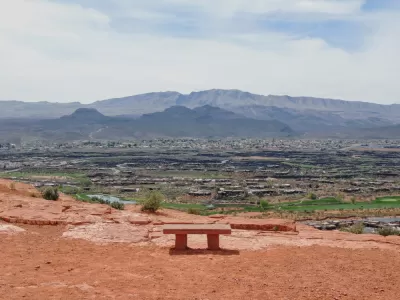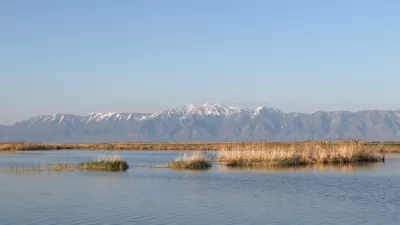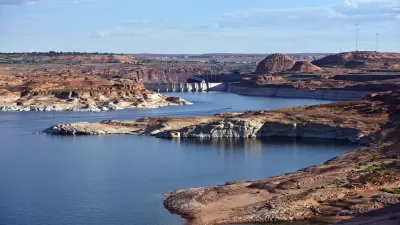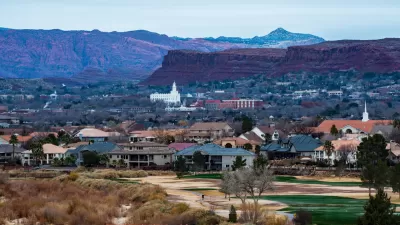Cheap water flows freely to the golf courses of St. George, Utah, but all the new residents mean it’s going to have to increase supply or reduce demand—or both.

St. George, Utah was recently named the fastest growing metropolitan area in the country; it is also in one of the driest climates in the country, which means that providing enough water will be an enormous challenge, writes Jake Bullinger at CityLab.
As is the case with other growing desert burgs, St. George grapples with water-supply issues. But the challenge here is unique. Remarkably cheap rates mean that residents of an area with only eight inches of annual rainfall are using tremendous amounts of water. An average St. George resident uses more than twice as much water as the average citizen of Los Angeles.
As in many dry cities, one of the most significant uses of water is outdoor irrigation (St. George has traditionally been a retirement community, with lots of golf courses). In some places, watering all that grass would be an expensive proposition, but in most of Utah, untreated "secondary water" is nearly free.
The question for St. George now is whether to push forward with a major infrastructure project that would provide a new source of water, or to focus on reducing demand through conservation.
The project—a pipeline that would bring more water from Lake Powell—is hugely expensive, but even if it weren’t, there’s a question of how much more water can be wrung from the Colorado River, which is shrinking in the short term due to drought and in the long term due to climate change.
“In this blossoming desert city,: Bullinger writes, “leaders have a choice: Do they let the roses go brown, or pay exorbitantly to keep them?”
FULL STORY: America's Fastest-Growing Urban Area Has a Water Problem

Maui's Vacation Rental Debate Turns Ugly
Verbal attacks, misinformation campaigns and fistfights plague a high-stakes debate to convert thousands of vacation rentals into long-term housing.

Planetizen Federal Action Tracker
A weekly monitor of how Trump’s orders and actions are impacting planners and planning in America.

San Francisco Suspends Traffic Calming Amidst Record Deaths
Citing “a challenging fiscal landscape,” the city will cease the program on the heels of 42 traffic deaths, including 24 pedestrians.

Adaptive Reuse Will Create Housing in a Suburban Texas Strip Mall
A developer is reimagining a strip mall property as a mixed-use complex with housing and retail.

Study: Anti-Homelessness Laws Don’t Work
Research shows that punitive measures that criminalized unhoused people don’t help reduce homelessness.

In U.S., Urban Gondolas Face Uphill Battle
Cities in Latin America and Europe have embraced aerial transitways — AKA gondolas — as sustainable, convenient urban transport, especially in tricky geographies. American cities have yet to catch up.
Urban Design for Planners 1: Software Tools
This six-course series explores essential urban design concepts using open source software and equips planners with the tools they need to participate fully in the urban design process.
Planning for Universal Design
Learn the tools for implementing Universal Design in planning regulations.
Heyer Gruel & Associates PA
JM Goldson LLC
Custer County Colorado
City of Camden Redevelopment Agency
City of Astoria
Transportation Research & Education Center (TREC) at Portland State University
Jefferson Parish Government
Camden Redevelopment Agency
City of Claremont





























